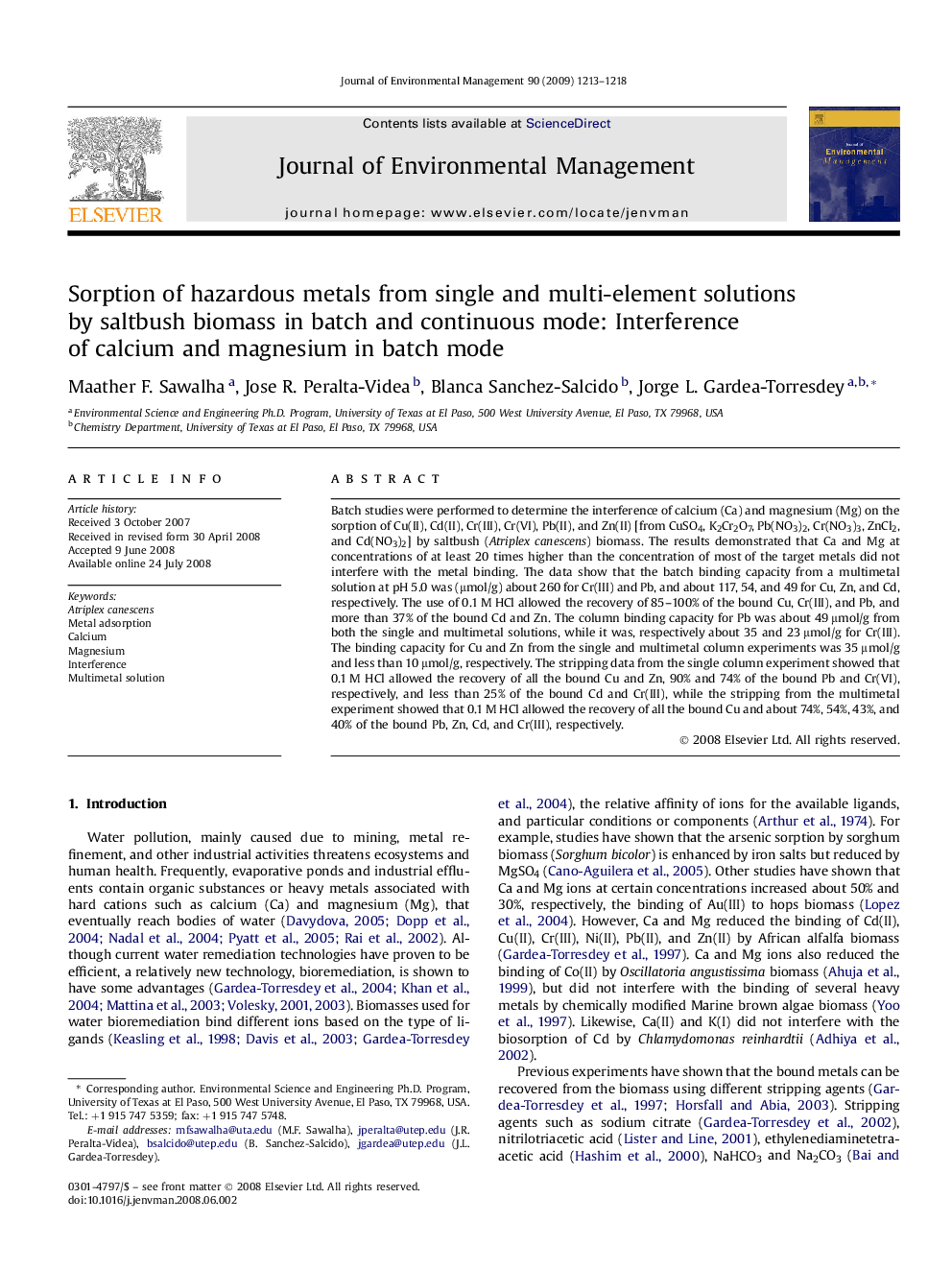| Article ID | Journal | Published Year | Pages | File Type |
|---|---|---|---|---|
| 1058464 | Journal of Environmental Management | 2009 | 6 Pages |
Batch studies were performed to determine the interference of calcium (Ca) and magnesium (Mg) on the sorption of Cu(II), Cd(II), Cr(III), Cr(VI), Pb(II), and Zn(II) [from CuSO4, K2Cr2O7, Pb(NO3)2, Cr(NO3)3, ZnCl2, and Cd(NO3)2] by saltbush (Atriplex canescens) biomass. The results demonstrated that Ca and Mg at concentrations of at least 20 times higher than the concentration of most of the target metals did not interfere with the metal binding. The data show that the batch binding capacity from a multimetal solution at pH 5.0 was (μmol/g) about 260 for Cr(III) and Pb, and about 117, 54, and 49 for Cu, Zn, and Cd, respectively. The use of 0.1 M HCl allowed the recovery of 85–100% of the bound Cu, Cr(III), and Pb, and more than 37% of the bound Cd and Zn. The column binding capacity for Pb was about 49 μmol/g from both the single and multimetal solutions, while it was, respectively about 35 and 23 μmol/g for Cr(III). The binding capacity for Cu and Zn from the single and multimetal column experiments was 35 μmol/g and less than 10 μmol/g, respectively. The stripping data from the single column experiment showed that 0.1 M HCl allowed the recovery of all the bound Cu and Zn, 90% and 74% of the bound Pb and Cr(VI), respectively, and less than 25% of the bound Cd and Cr(III), while the stripping from the multimetal experiment showed that 0.1 M HCl allowed the recovery of all the bound Cu and about 74%, 54%, 43%, and 40% of the bound Pb, Zn, Cd, and Cr(III), respectively.
